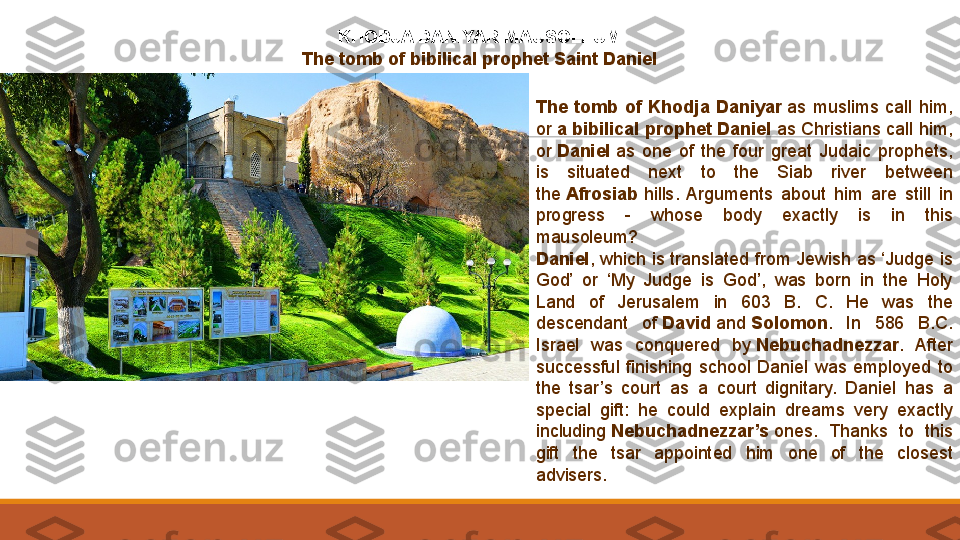Samarkand izngliz tilida










Samark and
Among the cities of the world, one of the most ancient is Samarkand, whose history dates back 2,500 years. In its time, the city was conquered by the warriors of Alexander the Great, the Army of the Arab Caliphate, and the Mongol hordes of Genghis-khan. Each time, after the bloody battles, devastation and fire, it was reborn, to become once again an important city, and at times the capital of a major Central Asian state . Originally Samarkand occupied part of Mount Afrasiab (Afrosiab), which rises to the north of modern Samarkand. The city grew, expanded its borders, and by the ninth century it occupied the entire hill. By the tenth century its numerous suburbs to the south of the hill were built up with bazaars, caravanserais, baths and mosques. This part of the city was well irrigated. In contrast, Afrasiab presented difficulties in water supply, and an intricate arrangement of lead water pipes along an aqueduct was required. When Samarkand was captured by the Mongols the ancient water supply system was destroyed, and life on Afrasiab ended.
Geographical coordinates : 39°39'00" N 66°57'00" E Former names : Marakanda, Smarakanda Elev at ion: 702 m Of fi cial language: Uzbek Populat ion: 366,000 (2007) Nationals : Uzbek, Tajik, Russian, Iranian etc. T i me zone: UTC+5 Phone code: +998 66 Zip code: 1401XX A utomobile codes : 30
This madrasah is located in the main square of Samarkand – Registan. It was constructed in 1417 during the reign of Ulugbek. Great scientist, astronomer and mathematician, Ulugbek, being a grandson of Tamerlane, ruled the country for forty years, and during that time the Samarkand city has gained fame as a Science Center of Middle Ages. Ulugbek was born in 1394, in one of the military campaigns of his grandfather, Amir Temur in Soultaniye that between Sogdiana and Iran. Since childhood, the boy surprised his surroundings excellent memory and desire for knowledge.
